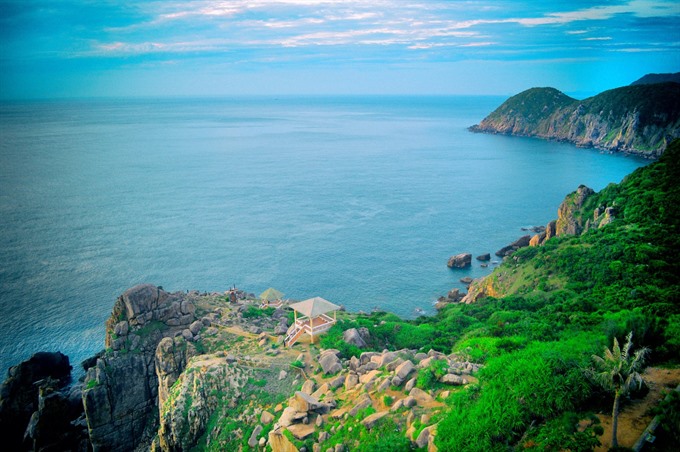 Society
Society

The quality of seawater in coastal areas of Việt Nam has been on the decline, with a heavy weight of total suspended solids (TSS), according to Việt Nam Sea and Islands General Department.
 |
| Bãi Môn Beach in Phú Yên Province. Experts say The quality of seawater in coastal areas of Việt Nam has been on the decline. — VNS/VNS Photo Thái Hà |
HÀ NỘI — The quality of seawater in coastal areas of Việt Nam has been on the decline, with a heavy weight of total suspended solids (TSS), according to Việt Nam Sea and Islands General Department.
Contaminated seawater, caused by organic chemicals, has reportedly resulted from main land waste released by factories, residential areas, hospitals or agricultural production activities.
Figures from Ministry of Natural Resources and Environment (MONRE) reveal that 70 per cent of waste released to the sea every year comes from the mainland.
This untreated waste, which was pumped directly into the ocean, brings along sediment, plastic, chemicals, metals, oil, and even radioactive substances.
Chemical Oxygen Demand or COD, the total measurement of all chemicals (
Pressure from aquaculture activities in coastal areas is also a big problem, MONRE said.
Aquaculture breeding areas in estuaries along the coast have created organic waste, microorganism toxic substances and domestic waste from breeding, resulting in degraded environment quality, disease outbreaks and economic losses.
The ministry showed that one hectare of shrimp breeding area releases, on average, about five tonnes of solid waste, and a large amount of liquid waste in only one season.
Cát Bà National Park in northern Hải Phỏng City, covering over 5,400 hectares of water surface, is a typical example.
Since tourism activities developed and aquaculture started there, the environment has become seriously polluted.
Side effects of the marine economy
Until September 2014, coastal cities and provinces in Việt Nam had 44 sea ports where sensitive and valuable ecosystems are located, bringing huge economic value to the country.
However, the MONRE report reveals oil spills, grease, and waste from ships operating around these ports have caused pollution and created risks for the living environment of animals and plants in the areas.
According to the Environment Observation and Analysis Centre of northern Quảng Ninh province, oil and grease pollution along the Hạ Long Bay coast from 2011 to 2015 has reached 0.012 to 0.826 mg per litre, compared to standard statistics of 0.2.
Untreated domestic and industrial waste water has high levels of bacteria. Additionally, the mercury levels at Vũng Tàu port and Nha Trang port have reached an alarming rate, exceeding the safe limits.
At the National Environment Report launch last month, Hoàng Dương Tùng, deputy director general of the Việt Nam Environmental Administration under MONRE said that coastal seawater has been partially contaminated at several spots due to the impact of economic development activities along the coast.
Many localities prioritise economic goals and underestimate environmental protection, as well as ignore the roles and responsibilities of social organisations, the community and residents, he said.
The report suggests the National Assembly, Government, ministries and local agencies finalise environmental protection legal systems while strengthening State management on the issue. — VNS